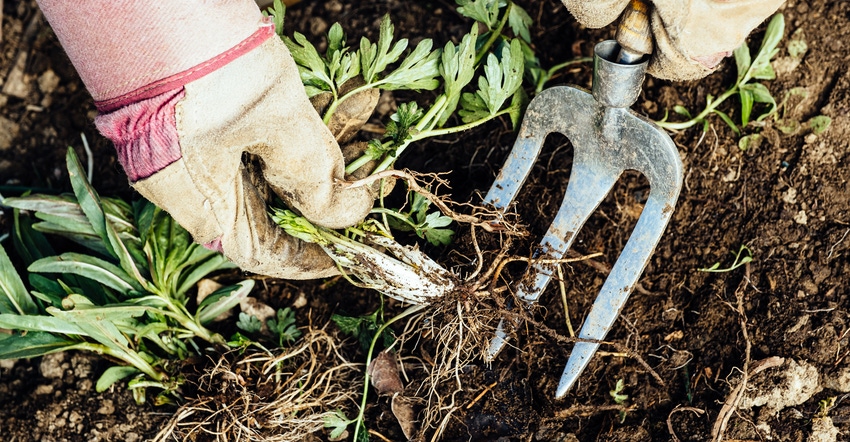May 19, 2022

You would think that pulling weeds is simple enough that anybody can figure it out. Surely, it does not require a degree to master — just grab the weed, and yank it out of the ground.
Many people think that it is as easy as that. But time after time, I see new volunteers, homeowners and interns who struggle to stay on top of recurring weed problems.
One thing I’ve noticed is that people obsess over getting every weed out, all at once. They start hand-pulling at one end of the garden, and meticulously work through to the other side until every weed — large, medium or small — is gone. That’s fine if you can get it all done in one session, but that’s not how weeding always happens, especially in larger gardens.
Tackle tall weeds
In most cases, noticeable weeds are the biggest ones that stand out like a sore thumb. It only takes a quick pass through the garden to pull those big, obvious weeds — the ones that are a foot tall or more. The ones that are getting ready to flower, or already are. These are the low-hanging fruit. These are the weeds that you can pull while fetching the paper or taking the recycling to the curb.
Once pulled, direct-compost those weeds. No need to gather them in a pile or in a bucket and haul them away. Hide them under or behind another plant and let them rot out of sight, directly in the garden. Or wad them into a ball and heave them to the back of the garden where they disappear.
Remember, you are only grabbing the biggest, most obvious weeds in sight, and be sure that they are not covered with ripe seeds. Weeds with seeds need to go to the compost pile or trash. The rest of the small-to-medium weeds can wait until the weekend.
Solve small weed problems
For the myriad tiny weeds, you may not need to pull them by hand. Try a scuffle hoe or a Dutch hoe when soil is dry, to scrape and sever the tops from their roots. Those tiny weeds will shrivel up in 24 hours and virtually disappear, so there may not be a need to remove them from the garden.
Keep in mind that the reason there are so many tiny weeds is that the mulch was too thin or gone altogether. If you are using brown mulch, topdress these thin areas, making sure that mulch is 2 inches deep to prevent future weeds.
Take advantage of leaves that naturally fall from the trees. Rake them off the lawn and evenly (and thinly) spread them on bare ground, between plants in flowerbeds.
Remove wandering weeds
Pesky weeds such as tall goldenrod, wild germander and horse nettle are frustrating because they have suckering roots that spread far and wide.
Pull them when the soil is moist, to remove as many roots as possible. You will likely miss some roots and need to pull repeatedly through the spring and summer months to get them under control. Be sure to prevent them from going to seed, or they will spread out of control.
Recurring weeds can be the bane of a gardener's existence. But they don’t have to be with a little work and persistence.
Woodbury, a horticulturist, is a curator of the Whitmore Wildflower Garden at Shaw Nature Reserve in Gray Summit and an adviser to the Missouri Prairie Foundation’s Grow Native! program.
About the Author(s)
You May Also Like




